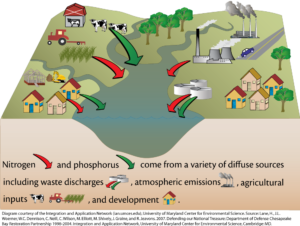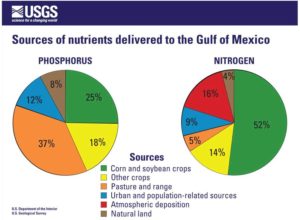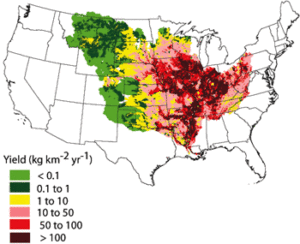Nutrient pollution threatens drinking water sources and ecological function in freshwater rivers, streams, and lakes in Missouri and throughout the Mississippi River basin. Missouri ranks among the top four leading state contributors of nutrient pollution (2nd for phosphorous and 4th for nitrogen) to the Mississippi River that makes its way to the Gulf of Mexico Dead Zone. As part of the Mississippi River Collaborative, a partnership of 13 environmental and legal groups, MCE supports efforts to reduce nutrient pollution inundating our waters.

The Collaborative released a report today, calling for the US Environmental Protection Agency (EPA) to perform its duties under the Clean Water Act and compel states along the Mississippi River to take specific actions to reduce nitrogen and phosphorus pollution flowing into the River and the Gulf. This report comes just weeks after the Iowa Environmental Council’s release of a research report discussing the health effects of nitrates in drinking water.

MRC’s basinwide call for nutrient pollution reduction action stems from an in-depth report revealing how the 10 states bordering the Mississippi River are not achieving nutrient reductions on their own. These reductions are necessary to protect the drinking water of millions of Americans and safeguard healthy ecosystems in their waterways. Nutrient pollution stems from multiple sources including soil and fertilizer in runoff from farms, discharges from wastewater treatment facilities, and fertilizer runoff from lawns and gardens in urban areas.
But Aren’t Nutrients a Good Thing..?

The biggest contributors to nutrient pollution are the fertilizers and manure which are over-applied to farm fields, suburban yards and golf courses, which are carried into the nearest river or stream by rain and snow melt. These conditions are exacerbated when the cropping systems are unvaried, such as only growing corn and soybean which are unable to absorb the amount of chemicals applied to the land, as well as when there are no sustainable practices used to collect some of the pollution before it gets to the nearest water source.

The map to the left shows phosphorus loadings to the Mississippi River across the basin.Not only do nutrients harm coastal ecosystems and fisheries, plenty of nutrient pollution stays right here in Missouri, choking out the native fish species and aquatic life that support the health of our drinking water sources, inland fisheries, and the places we swim and paddle.
MCE supports the EPA and DNR in addressing nutrient pollution through the Clean Water Act, citizen action to reduce water contamination, as well as the state and federal programs that help to fund the efforts of many farmers that use sustainable agriculture practices across the landscape to protect the waters we all need and share.

